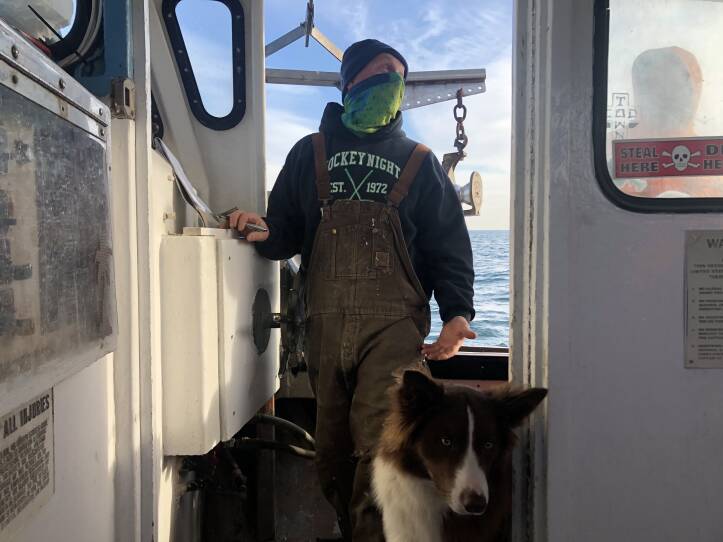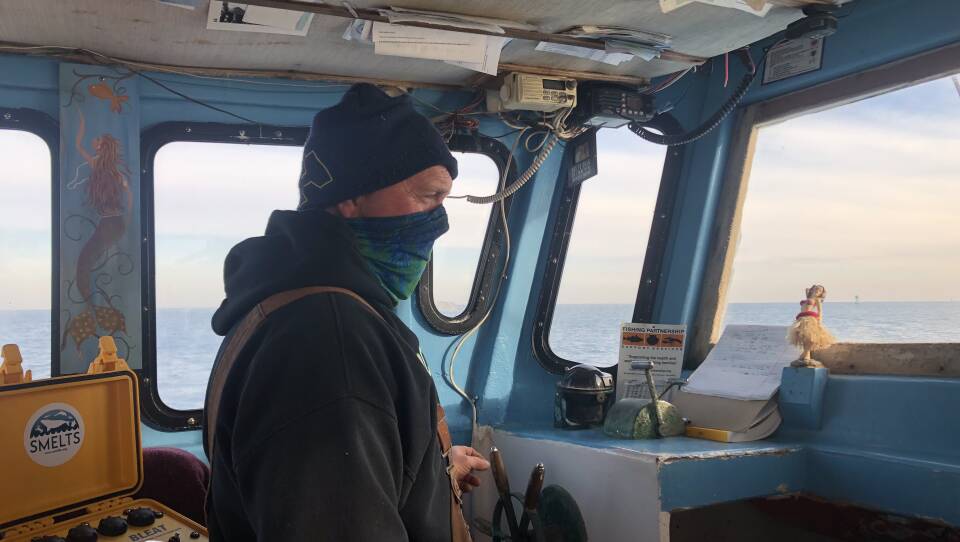Rob Martin has been fishing from the Sandwich Marina for 29 years off his boat, Resolve.
“It's only 40 feet. It was big when I first got it, and now it seems small,” he said while warming up inside his boat’s cabin on a cold January morning.
Over the last few decades, Martin, 56, has watched the lobster industry change and regulations increase.
In January, Massachusetts lobstermen were banned from most state waters until late spring to protect critically endangered North Atlantic right whales that typically spend February to May feeding in the area.
The new restrictions extend and expand an existing closure that’s long affected Martin and fellow lobstermen.
“My closure is Mass Bay,” he explained. “It's a 3,000-square-nautical-mile closure, which encompasses all of Cape Cod Bay, all of our Outer Cape, going down off of Nantucket” and beyond.

That area is closed for three months each year already because lobster lines — which run from buoys on the surface down to the ocean floor — pose a danger to the whales.
Federal regulators say that about 98% of fixed gear end lines along the U.S. Atlantic coast come from lobstemen’s gear, and entanglement in lines accounts for roughly half of all right whale deaths, though few have been connected to gear from Massachusetts.
Under a special state permit, Martin is working with scientists and engineers to test a new kind of gear technology called “ropeless” fishing. In that role, Rob Martin fishes on the leading edge of an effort to save right whales — and the local lobster fishery.
Checking The Gear
“And we're just about there,” he called out after motoring about 20 minutes into Cape Cod Bay.
Normally, when a lobsterman checks his traps, he looks for his buoys on the water surface. But with ropeless technology, buoys and vertical lines are gone, so lobstermen cruise to the general area where they dropped their traps and send an acoustic signal down to the gear on the ocean floor.
“So everything's ready to go,” Martin said. He reached for a pair of waterproof overalls, and with his other hand grabbed his iPhone. It wasn’t to make a call; he opened an app that sends the acoustic signal to the lobster traps.
“And I’m hitting the release command,” he explained. “Release!”
Some day, if more fishermen use ropeless gear, the app will also show Martin where other traps are set, which will help to avoid gear competition.
“That's going to beep in a second. It's gonna tell me how far away the unit is,” he said. As promised, within seconds came the signal. “OK, 79 meters away.” Two quick beeps alerted him: it was time to start the countdown.
Somewhere under the water, a remotely triggered air tank was inflating a bag that would shoot up to the surface. That is, if the technology worked as designed.

“Yeah,” he said as his phone beeped again. “63 meters away.”
Soon a long, inflatable bag popped out of the water, sticking up into the air. The bag, which was traffic-cone orange, resembled one of those blow-up tubes that bobs around outside a car dealership.
At that moment, for the only time since he dropped his traps days earlier, a rope ran down through the water column, from the surface to the sea floor.
Martin leaned over the side of the boat and lifted the bag out of the water. He put it on the rail and squeezed out the air with his forearms.
“This is how you deflate the bag. Just fold it,” he said as a gust of air rushed out. “Boom. The air’s all out of it.”
He used a pulley to haul the end trap into the boat. With that up, Martin packed the orange inflatable bag, and a little foam float that came up with it, back into the trap like a parachute. Then he checked the air in the inflation tanks. He said he’ll be able to fish for more than a month before he has to refill them.
“So now we're ready to start hauling the regular traps, the ground line,” he said.
The Hope Of Ropeless
From there, it was just like regular lobster fishing. Martin hauled up 10 traps all connected by a rope known as the groundline. Out of most came big, blue-green lobsters with rust-colored claws.
“That's a female with eggs,” he said, pointing to the underbelly of one lobster. “Has to be thrown back.”
In just minutes, he banded the claws of a dozen lobsters and got his traps flying off the stern, where they floated back down to the sea floor to be checked another day.
Martin’s successful trip serves to some as proof: ropeless fishing works. But when it comes to ropeless technology, one lobstermen’s success isn’t enough for an industry-wide conversion. Questions remain about the cost, reliability and safety.
The answers will determine whether ropeless fishing will save the whales and preserve the jobs of lobstermen like Rob Martin.





